OLD ENGLISH PHONETICS SAXON INVASIONS AND LAND

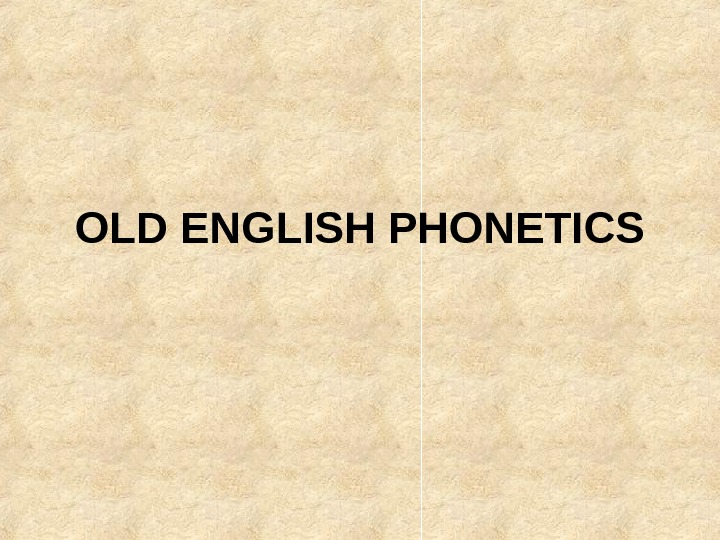
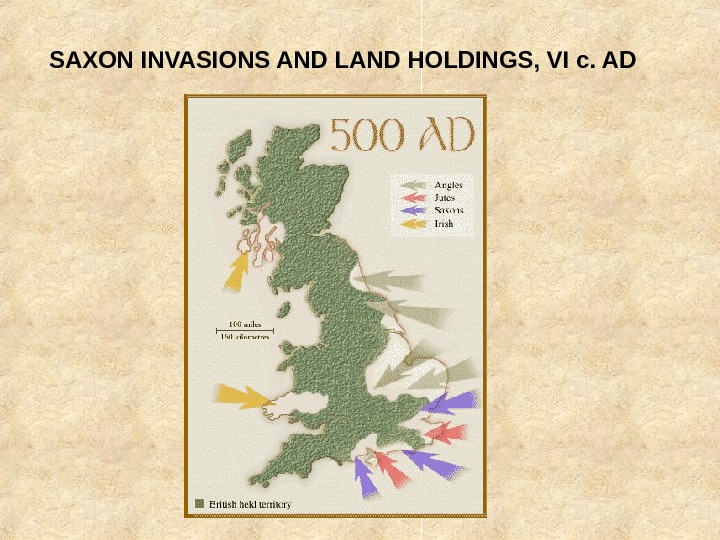

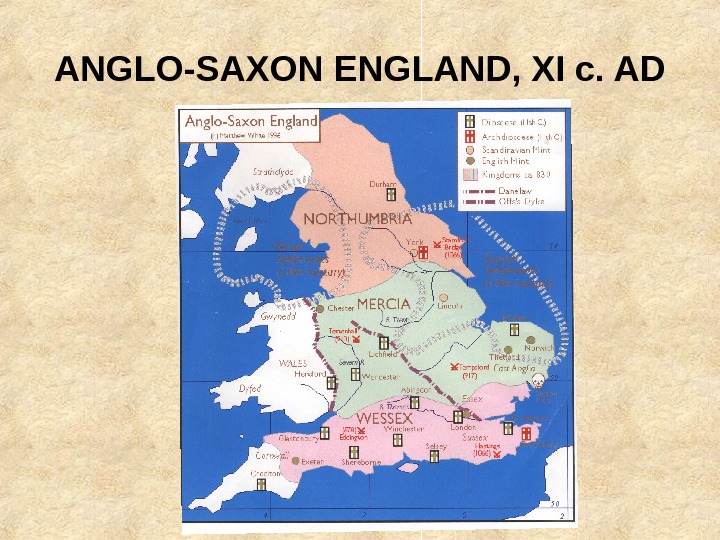
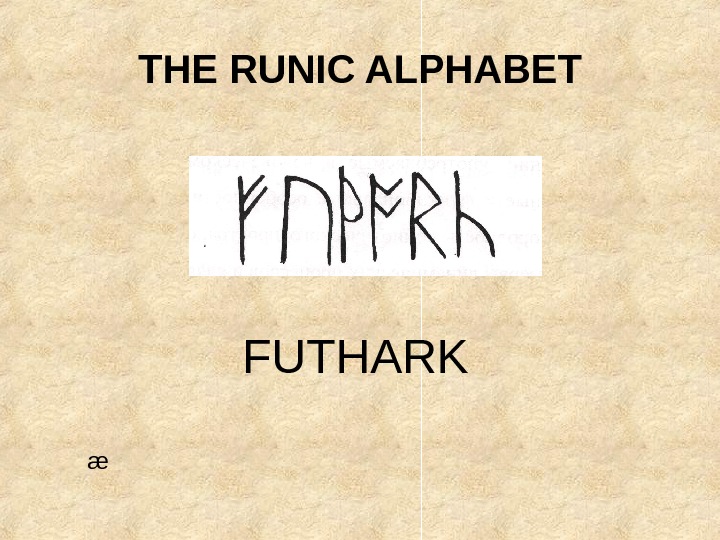
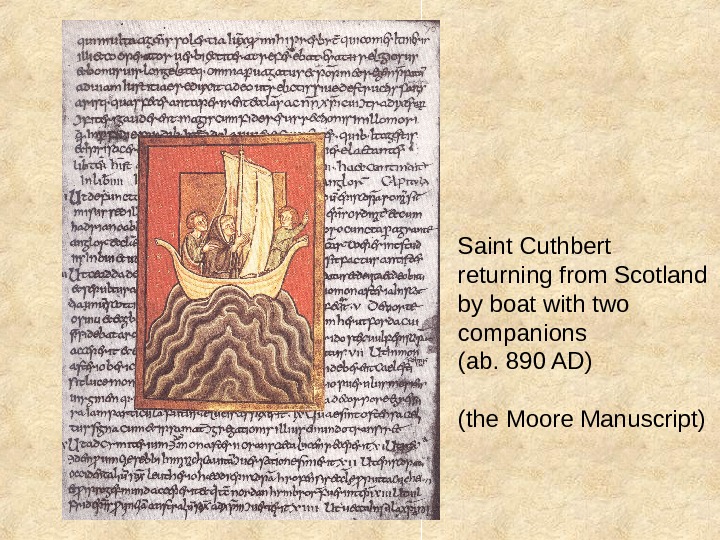
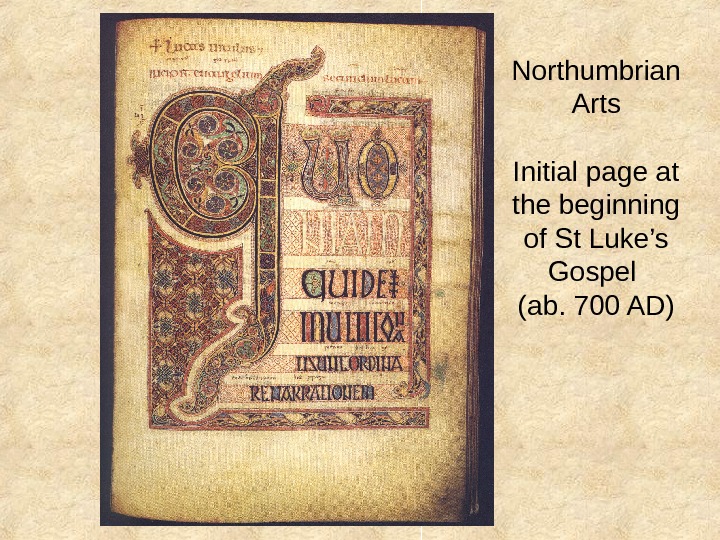

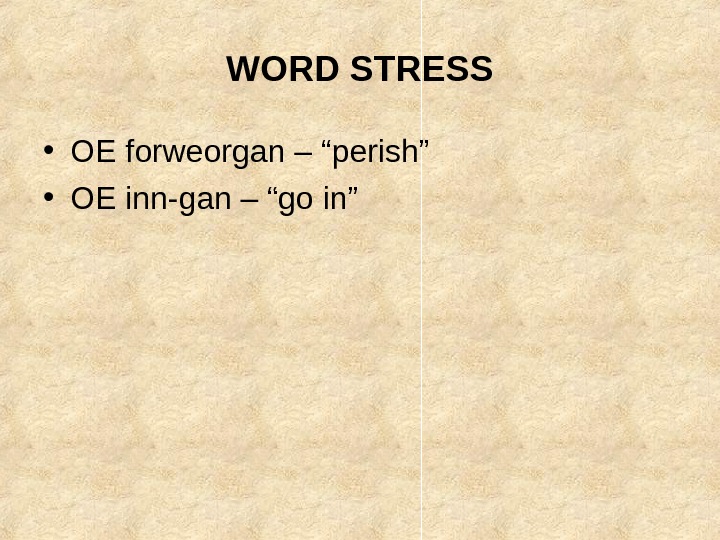
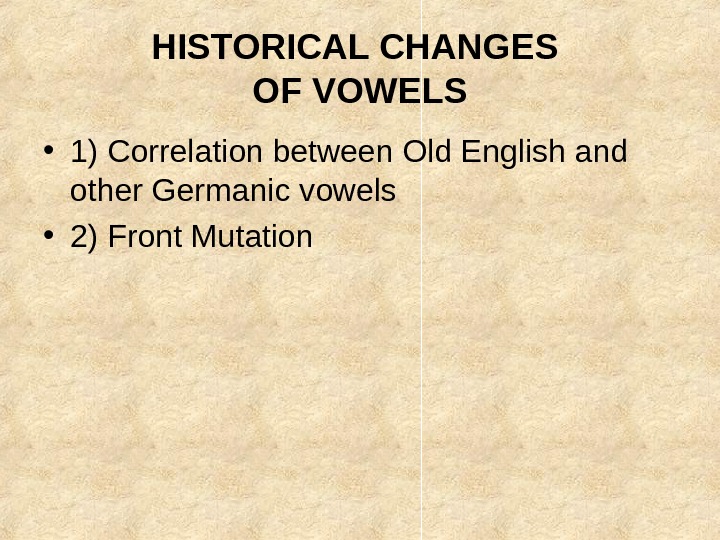
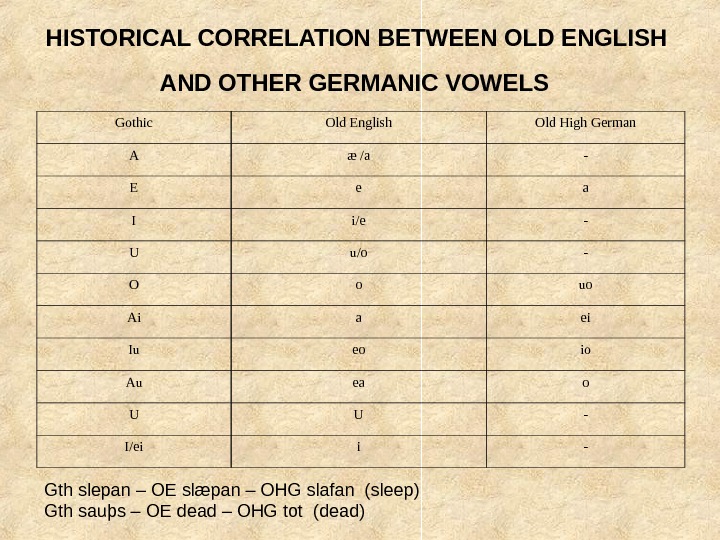

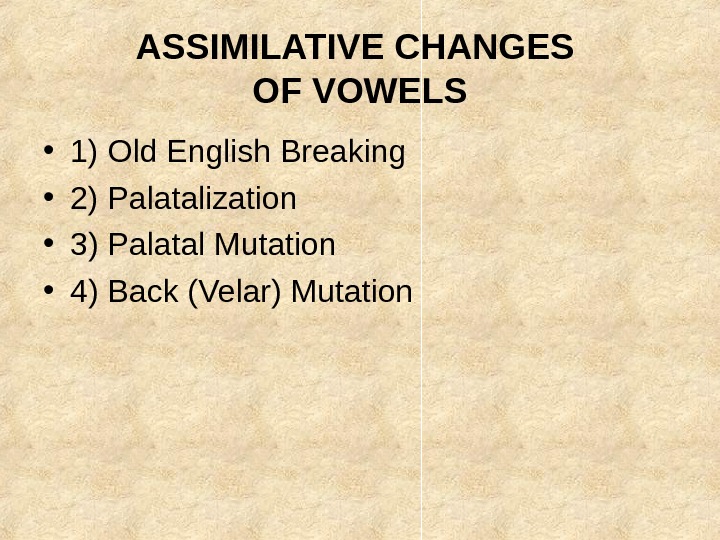
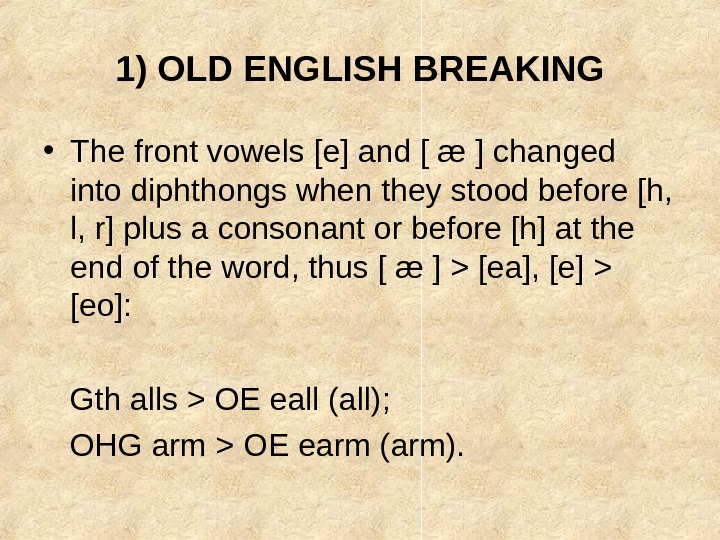
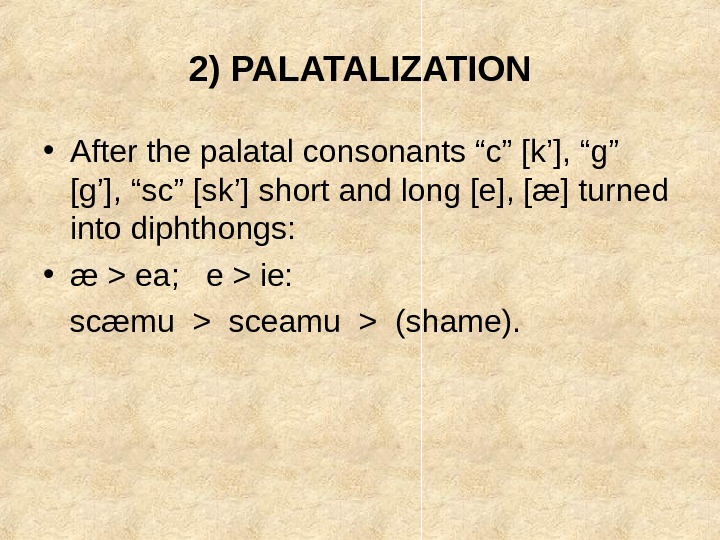

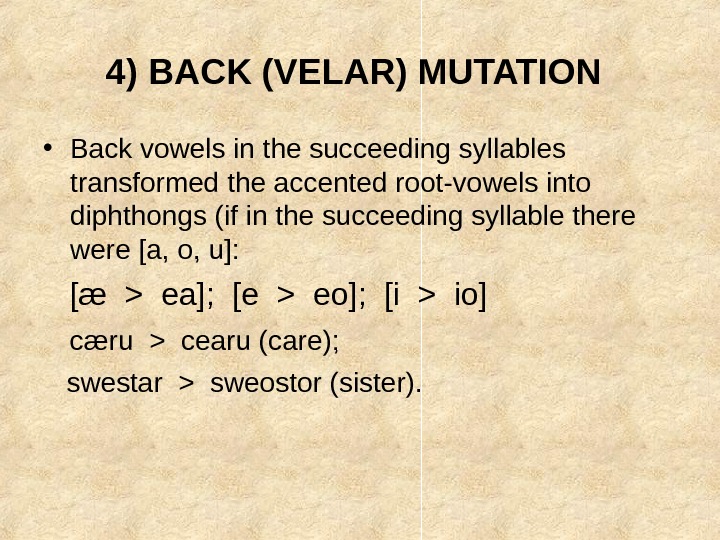
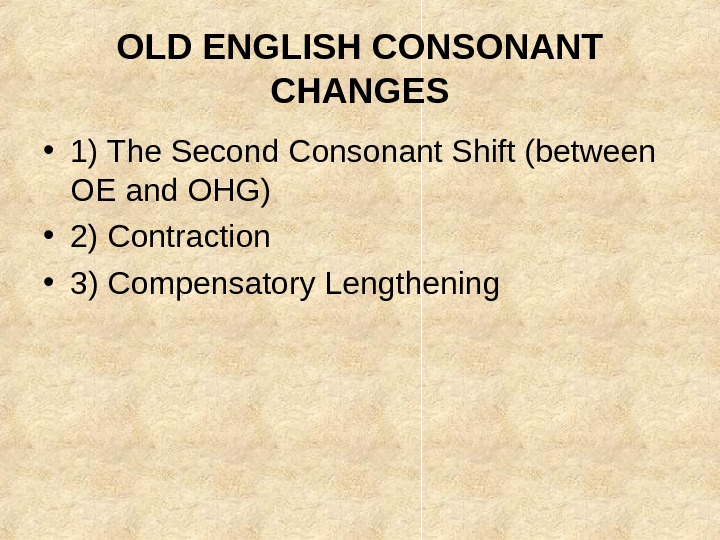

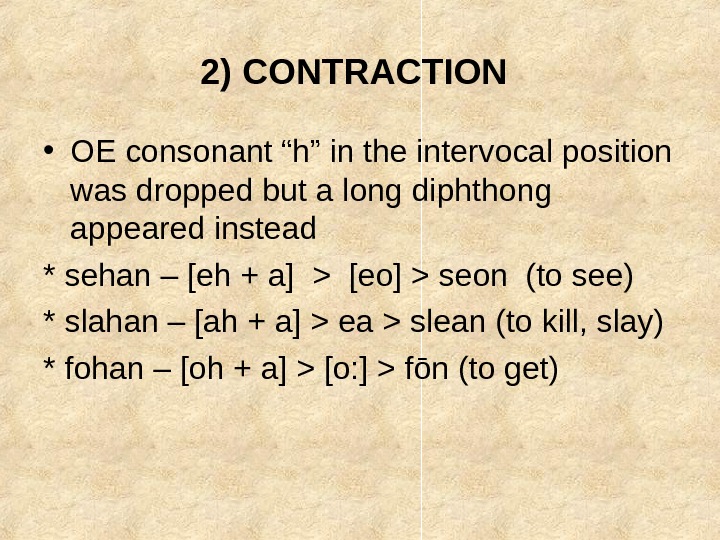
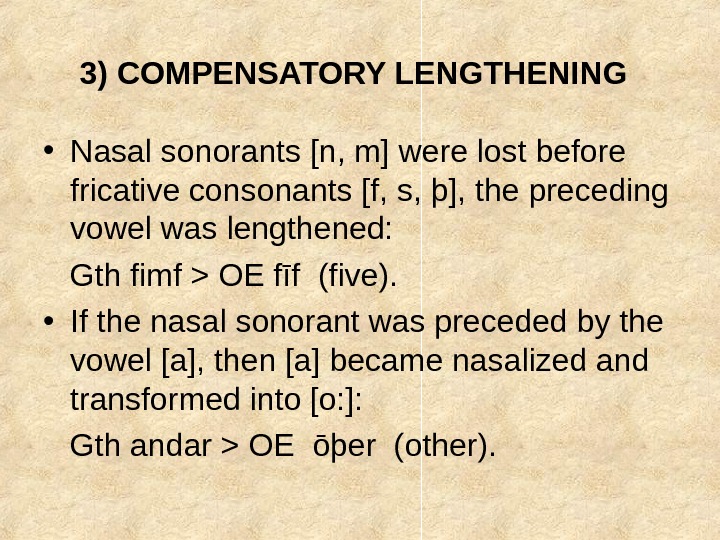
- Размер: 14.1 Mегабайта
- Количество слайдов: 21
Описание презентации OLD ENGLISH PHONETICS SAXON INVASIONS AND LAND по слайдам
 OLD ENGLISH PHONETICS
OLD ENGLISH PHONETICS
 SAXON INVASIONS AND LAND HOLDINGS, VI c.
SAXON INVASIONS AND LAND HOLDINGS, VI c.
 ANGLO-SAXON ENGLAND, VII-VIII c.
ANGLO-SAXON ENGLAND, VII-VIII c.
 ANGLO-SAXON ENGLAND, XI c.
ANGLO-SAXON ENGLAND, XI c.
 THE RUNIC ALPHABET FUTHARK æ
THE RUNIC ALPHABET FUTHARK æ
 Saint Cuthbert returning from Scotland by boat with two companions (ab. 890 AD) (the Moore Manuscript)
Saint Cuthbert returning from Scotland by boat with two companions (ab. 890 AD) (the Moore Manuscript)
 Northumbrian Arts Initial page at the beginning of St Luke’s Gospel (ab. 700 AD)
Northumbrian Arts Initial page at the beginning of St Luke’s Gospel (ab. 700 AD)
 WORLD HISTORY by Orosius (9 th c. ) • Ohthere sæde his hlaforde Alfrede cyninge [‘o: xtxere ‘sæ: de his ‘xla: vorde ‘ælfre: de ‘kyninge] “ Ohthere said (to) his lord Alfred (the king) • þæt he ealra Norþmonna norþmest bude… [þæt he: ‘ealra ‘norþ’monna ‘norþmest ‘bu: de. . . ] that he (of) all Northmen to the north lived. • Þa fōr he giet norþryhte [þa: fo: r he: jiet ‘norþ’ryxte] Then sailed he yet to the north • swa feor swa he meahte [swa: feor swa: he: ‘meaxte] as far as he might (could) • On þam oþrum þrim dagum gesiglan. [on þa: m ‘o: þrum þri: m ‘dajum je’sijlan] in the other three days’ sail”.
WORLD HISTORY by Orosius (9 th c. ) • Ohthere sæde his hlaforde Alfrede cyninge [‘o: xtxere ‘sæ: de his ‘xla: vorde ‘ælfre: de ‘kyninge] “ Ohthere said (to) his lord Alfred (the king) • þæt he ealra Norþmonna norþmest bude… [þæt he: ‘ealra ‘norþ’monna ‘norþmest ‘bu: de. . . ] that he (of) all Northmen to the north lived. • Þa fōr he giet norþryhte [þa: fo: r he: jiet ‘norþ’ryxte] Then sailed he yet to the north • swa feor swa he meahte [swa: feor swa: he: ‘meaxte] as far as he might (could) • On þam oþrum þrim dagum gesiglan. [on þa: m ‘o: þrum þri: m ‘dajum je’sijlan] in the other three days’ sail”.
 WORD STRESS • OE forweor g an – “perish” • OE inn-gan – “go in”
WORD STRESS • OE forweor g an – “perish” • OE inn-gan – “go in”
 HISTORICAL CHANGES OF VOWELS • 1) Correlation between Old English and other Germanic vowels • 2) Front Mutation
HISTORICAL CHANGES OF VOWELS • 1) Correlation between Old English and other Germanic vowels • 2) Front Mutation
 HISTORICAL CORRELATION BETWEEN OLD ENGLISH AND OTHER GERMANIC VOWELS Gothic Old English Old High German A æ /a — E e a I i/e — U u/o — O o uo Ai a ei Iu eo io Au ea o U U — I/ei i — Gth slepan – OE slæpan – OHG slafan (sleep) Gth sauþs – OE dead – OHG tot (dead)
HISTORICAL CORRELATION BETWEEN OLD ENGLISH AND OTHER GERMANIC VOWELS Gothic Old English Old High German A æ /a — E e a I i/e — U u/o — O o uo Ai a ei Iu eo io Au ea o U U — I/ei i — Gth slepan – OE slæpan – OHG slafan (sleep) Gth sauþs – OE dead – OHG tot (dead)
 FRONT MUTATION (переднеязычная перегласовка, умлаут) • A ll vowels become narrow under the influence of the phonemes [ i ] or [j] in the succeeding syllable, these phonemes [ i ] and [j] being lost : [a > e]; [a > æ]; [ea > ie]; [eo > ie]; [o > e]; [u > y] • * domjan > *doemjan > *demjan > OE dēman (to deem).
FRONT MUTATION (переднеязычная перегласовка, умлаут) • A ll vowels become narrow under the influence of the phonemes [ i ] or [j] in the succeeding syllable, these phonemes [ i ] and [j] being lost : [a > e]; [a > æ]; [ea > ie]; [eo > ie]; [o > e]; [u > y] • * domjan > *doemjan > *demjan > OE dēman (to deem).
 ASSIMILATIVE CHANGES OF VOWELS • 1) Old English Breaking • 2) Palatalization • 3) Palatal Mutation • 4) Back (Velar) Mutation
ASSIMILATIVE CHANGES OF VOWELS • 1) Old English Breaking • 2) Palatalization • 3) Palatal Mutation • 4) Back (Velar) Mutation
![1) OLD ENGLISH BREAKING • The front vowels [e] and [ æ ] changed 1) OLD ENGLISH BREAKING • The front vowels [e] and [ æ ] changed](/docs//old_english_phonetics-3_images/old_english_phonetics-3_13.jpg) 1) OLD ENGLISH BREAKING • The front vowels [e] and [ æ ] changed into diphthongs when they stood before [h, l, r] plus a consonant or before [h] at the end of the word, thus [ æ ] > [ea], [e] > [eo]: Gth alls > OE eall (all); OHG arm > OE earm (arm).
1) OLD ENGLISH BREAKING • The front vowels [e] and [ æ ] changed into diphthongs when they stood before [h, l, r] plus a consonant or before [h] at the end of the word, thus [ æ ] > [ea], [e] > [eo]: Gth alls > OE eall (all); OHG arm > OE earm (arm).
![2) PALATALIZATION • After the palatal consonants “c” [k’], “g” [g’], “sc” [sk’] short 2) PALATALIZATION • After the palatal consonants “c” [k’], “g” [g’], “sc” [sk’] short](/docs//old_english_phonetics-3_images/old_english_phonetics-3_14.jpg) 2) PALATALIZATION • After the palatal consonants “c” [k’], “g” [g’], “sc” [sk’] short and long [e], [æ] turned into diphthongs: • æ > ea; e > ie: scæmu > sceamu > (shame).
2) PALATALIZATION • After the palatal consonants “c” [k’], “g” [g’], “sc” [sk’] short and long [e], [æ] turned into diphthongs: • æ > ea; e > ie: scæmu > sceamu > (shame).
 3) PALATAL MUTATION • The same result as the Front Mutation gives, but through the influence of the sound [x’]: neaht > nieht > niht, nyht (the contraction of [ie] into [y]).
3) PALATAL MUTATION • The same result as the Front Mutation gives, but through the influence of the sound [x’]: neaht > nieht > niht, nyht (the contraction of [ie] into [y]).
 4) BACK (VELAR) MUTATION • Back vowels in the succeeding syllables transformed the accented root-vowels into diphthongs (if in the succeeding syllable there were [a, o, u]: [æ > ea]; [e > eo]; [i > io] cæru > cearu (care); swestar > sweostor (sister).
4) BACK (VELAR) MUTATION • Back vowels in the succeeding syllables transformed the accented root-vowels into diphthongs (if in the succeeding syllable there were [a, o, u]: [æ > ea]; [e > eo]; [i > io] cæru > cearu (care); swestar > sweostor (sister).
 OLD ENGLISH CONSONANT CHANGES • 1) The Second Consonant Shift (between OE and OHG) • 2) Contraction • 3) Compensatory Lengthening
OLD ENGLISH CONSONANT CHANGES • 1) The Second Consonant Shift (between OE and OHG) • 2) Contraction • 3) Compensatory Lengthening
 1) THE SECOND CONSONANT SHIFT Gothic / OE Old High German a) vowel + p, t, k OE scip – OHG skif (ship) vowel + f, tz, h (or doubled after a short vowel — ff, zz, hh ) b) p, t, k in the initial position, after a consonant or doubled Gth twai, OE twa – OHG zwei [ei] (two) pf, ph, z/ zz, ch/ kh c) b, d, g OE gest – OHG kast (guest); p, t, k d) Þ OE þæt – OHG daz d
1) THE SECOND CONSONANT SHIFT Gothic / OE Old High German a) vowel + p, t, k OE scip – OHG skif (ship) vowel + f, tz, h (or doubled after a short vowel — ff, zz, hh ) b) p, t, k in the initial position, after a consonant or doubled Gth twai, OE twa – OHG zwei [ei] (two) pf, ph, z/ zz, ch/ kh c) b, d, g OE gest – OHG kast (guest); p, t, k d) Þ OE þæt – OHG daz d
 2) CONTRACTION • OE consonant “h” in the intervocal position was dropped but a long diphthong appeared instead * sehan – [eh + a] > [eo] > seon (to see) * slahan – [ah + a] > ea > slean (to kill, slay) * fohan – [oh + a] > [o: ] > fōn (to get)
2) CONTRACTION • OE consonant “h” in the intervocal position was dropped but a long diphthong appeared instead * sehan – [eh + a] > [eo] > seon (to see) * slahan – [ah + a] > ea > slean (to kill, slay) * fohan – [oh + a] > [o: ] > fōn (to get)
![3) COMPENSATORY LENGTHENING • Nasal sonorants [n, m] were lost before fricative consonants 3) COMPENSATORY LENGTHENING • Nasal sonorants [n, m] were lost before fricative consonants](/docs//old_english_phonetics-3_images/old_english_phonetics-3_20.jpg) 3) COMPENSATORY LENGTHENING • Nasal sonorants [n, m] were lost before fricative consonants [f, s, þ], the preceding vowel was lengthened: Gth fimf > OE fīf (five). • If the nasal sonorant was preceded by the vowel [a], then [a] became nasalized and transformed into [o: ]: Gth andar > OE ōþer (other).
3) COMPENSATORY LENGTHENING • Nasal sonorants [n, m] were lost before fricative consonants [f, s, þ], the preceding vowel was lengthened: Gth fimf > OE fīf (five). • If the nasal sonorant was preceded by the vowel [a], then [a] became nasalized and transformed into [o: ]: Gth andar > OE ōþer (other).

